This post is also available in: Français (French)
What are electric cars like to use in the winter? It’s one of the first questions I get asked about my car. I have a Skoda Enyaq 60 and the winter is almost over. However this is my 6th winter in the Alps with an electric car ! My first was a much smaller BMW i3, I’ve written about it on “an EV in the snow”
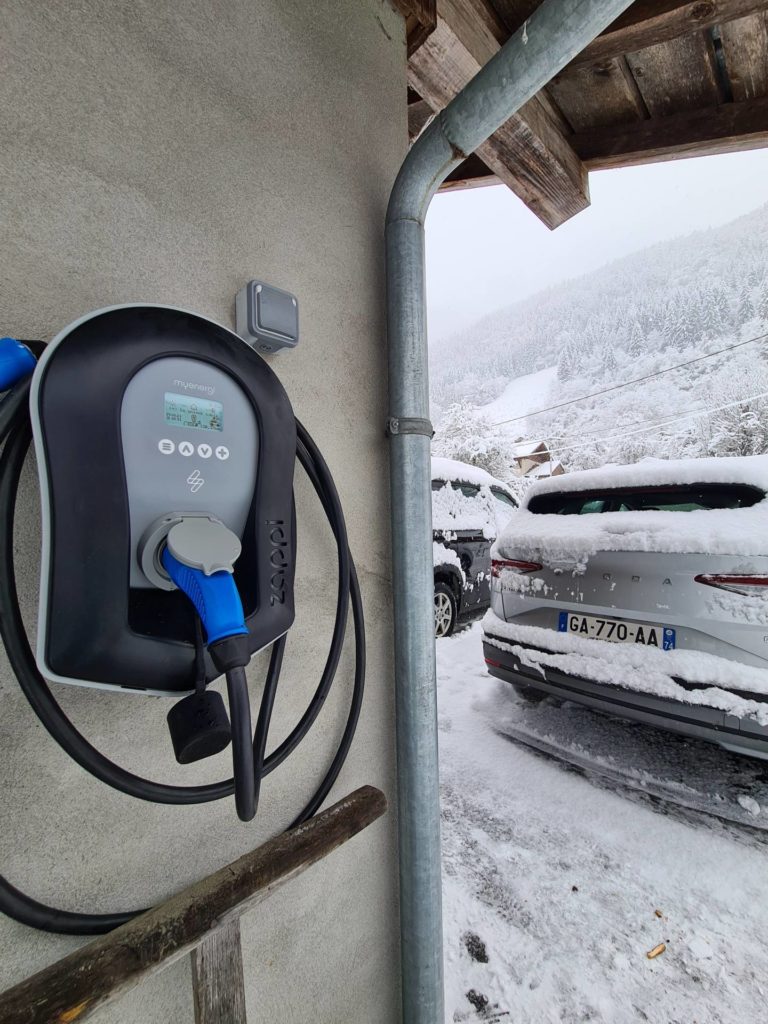
The quick answer is that they are much better to use than the old gas guzzler (ICE). I will never be going back. However, that is not the whole story. There are downsides that mostly concern reduced range.
EV’s are so much more convenient and comfortable in the cold
One of the best things about them is their preheat facility. You can either pre-programme your car via the app to warm up for a certain time, or just click the button on the app. Some cars have a button on the key, I’ve set this car to automatically warm or cool as you unlock it. The frost will melt from the windscreen and the car will be warm when you start. And unlike an ICE car which needs the engine to warm up first, the heaters are almost instantaneous. When you live on a hill like we do, you can drive downhill in an ICE car for 20 minutes and the car never warms up! I’ve heard people out here in the Alps say “why didn’t anyone tell me how good the preheat facility is?” Well, now you know. One of those things you never knew you needed, until you’ve tried it! This really is the game changer in the winter.
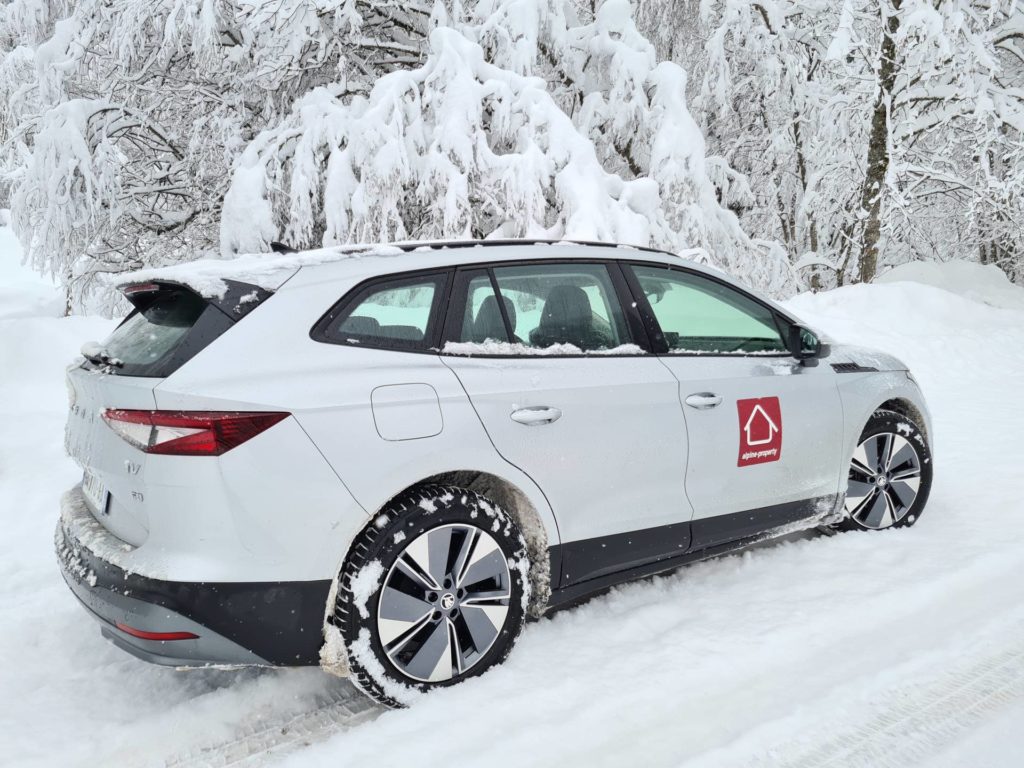

But what if you get “trapped” in your car in the winter?
This was a scare story put all over social media this winter. The papers were alarming people with the thought of dying of hyperthermia if they were trapped in the snow and could not run their fossil burner to keep warm. Whereas the opposite is actually the case. When an EV is stopped it can carry on heating the cabin without issue. It’s actually dead convenient when you are sat in your car at -10C waiting for something. In the old days you had to sit with the engine running. Not any more.
I’ve been stuck in traffic, stuck behind fallen trees in the depths of winter and been quite happy. Also much safer, there is no risk of death from carbon monoxide poisoning (see this tragic incident in Pakistan). The worst case scenario for my car is 6kw of heating on a 60kw battery, so that will run for 10 hrs when full, 5 hours when half full. And actually, because when the cabin is warm, the heaters will have to work less hard, my guess is that it’s more like 20 hrs full and 10 hrs at 50% – in fact this guy tested it and got even more.
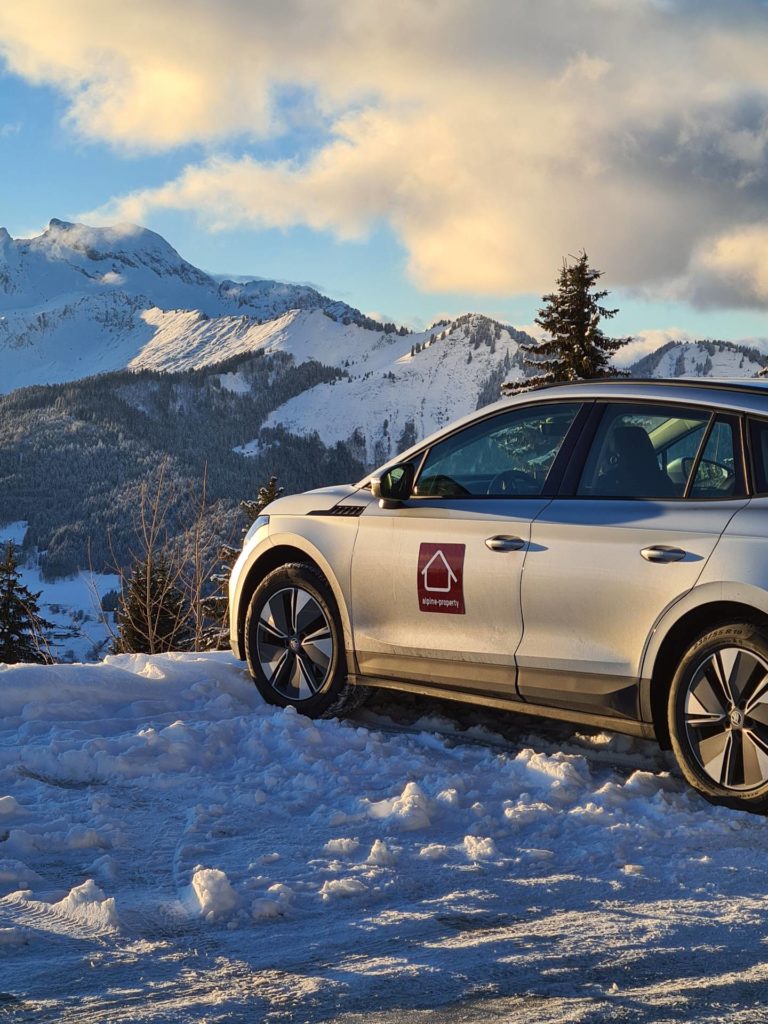
Driving in the snow
They handle driving on ice and snow really well. It goes without saying that I use winter tyres. All EV’s are automatic, they all have computer controlled throttle, brakes and sometimes steering too. You use your foot to tell the car you’d like to go and the car decides if the traction can take it. If the wheels slip, the car will reduce the power and find grip where it can. All modern cars do this, but it tends to be better in an EV, the lack of any gears just makes the whole process smoother. It’s the same with understeer or oversteer, it’s basically eliminated. It’s not just an EV thing though. I mention it however because it means you can have a rear wheel drive car and not worry about the old issues in the snow. Both my EV’s have been rear wheel drive and thanks to the traction and stability controls have outperformed my previous front wheel drive cars in the winter.
An electric motor doesn’t care about the cold
They don’t have diesel that can freeze. This isn’t a huge issue for ICE cars in the winter but it does happen, and when it does it is very inconvenient and often tricky to sort out. Occasionally when the temperatures drop under -10C and often at less than -15C you’ll see cars struggling on the alpine roads or broken down on the verge. It’s usually because their diesel has frozen. It is worse on certain models. I think it has something to do with water in the diesel filter freezing up.
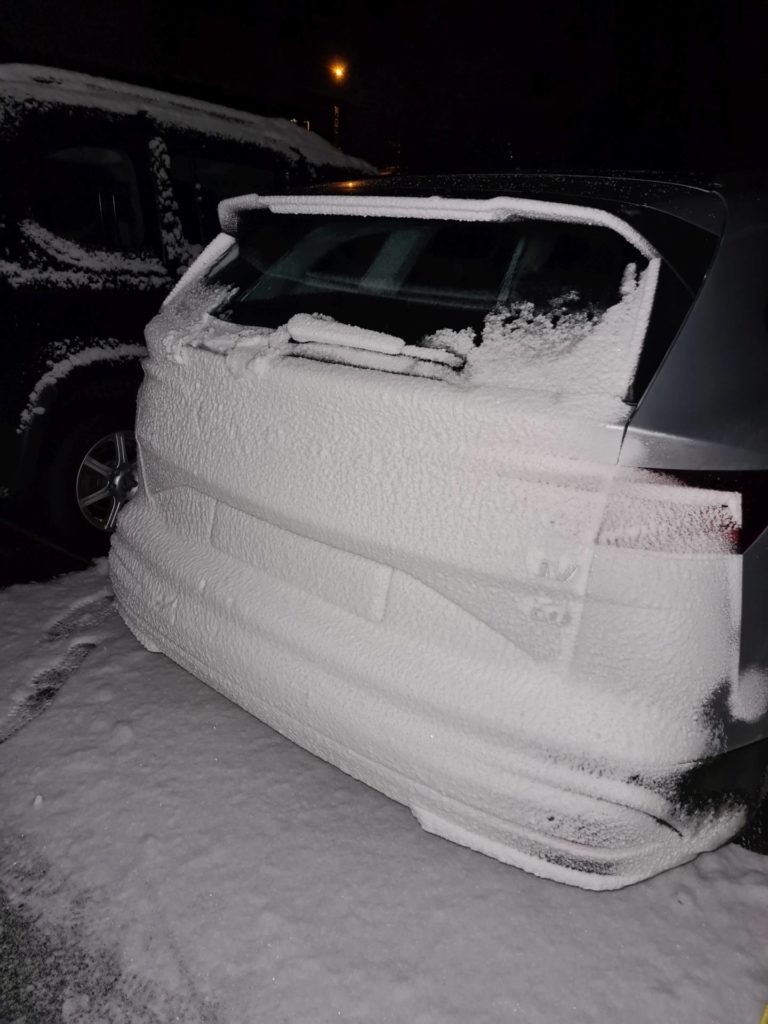
The inconvenient truth
The available range in an EV is less when it is cold. The reduction in the Enyaq is not as bad as it was in the BMW but it is still significant. Before I go any further, this is only as “issue” on long journeys. And only then because you’ll have to stop for a recharge. And even that it’s not too bad anymore. The Enyaq I have is the smaller capacity 60kw version. There is a bigger 80kw version available. When the outside temperature is more than around 10C it will manage 350km on one charge.
At -10C it will still drive 250km, and most of the time I don’t do more than that in a day, so the car just goes on charge overnight and I don’t notice. I make a weekly 200km trip on a Sunday night. That’s fine too. But more than that and I’ll have to charge it up on the journey. There are fast chargers all around us now and a quick top up sometimes only takes 5 min, for a refill from 10% to 80% it might take 30min, it’s rare that I have to do that though.
The reason things are getting better for EV’s in the cold is down to the size of the battery. It’s not so much that batteries are worse in the cold, it’s more that the car needs extra power to heat the cabin and the batteries, some people will turn the interior heating off to deal with this. I won’t. I don’t think that getting cold is worth it, even for the environment. And the windows steam up without the heaters and that’s just not clever.
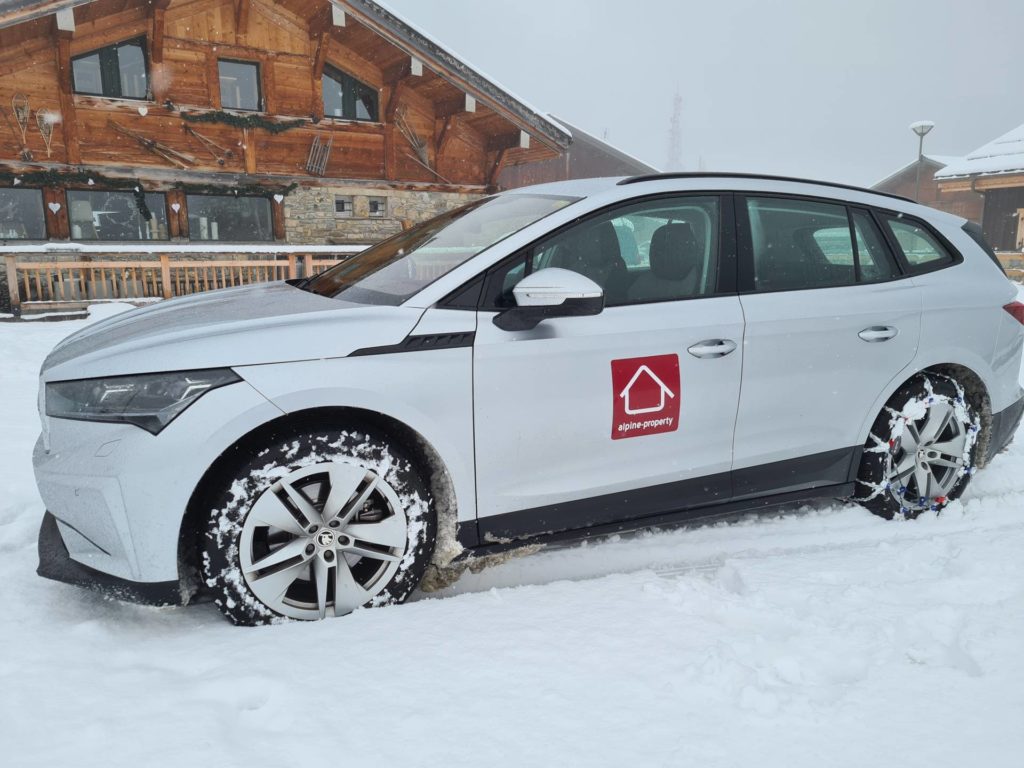
The maths tells all
I’ve simplified things slightly. My first car had a 20kw battery. The heaters took 5kw/h, on average, so the range could easily go down by 30% on a 2 hr trip
My second car had a 30kw battery. The heaters were the same and took 5kw/h, but that’s a smaller % of the battery so it was more like 20% reduction on a 2 hr trip.
This car has a 60kw battery, the heaters take 6kw, so that’s a reduction in range of 15% on a 2 hr trip.
The other way to improve this is to buy a car with a heat pump fitted. It does come standard on many EV’s, which is great. Not on the Enyaq though, in my case it would have been a 1000€ extra, so not really worth it. Under ideal conditions they could reduce that 6kw load to 2kw, at which point that’s a 3% reduction. And if you get the long range version which has an 80kw battery, that would mean a 2.5% reduction.

Even more inconvenient truth
Long trips in the winter. And I repeat, this is not for round trips, this is for long linear trips that will require recharges on the way. So you car has a range of 350km at 100% charge. That’s fine and that’s the summer too. But it’s colder in the winter, lets say -1C, so that’ll mean a loss of about 20% on the range range = 280km. Which is still fine if you are doing a round trip, but if you are on a linear trip and want to charge along the way, you won’t want to run the car much below 10% “just in case”, so that reduces the range again to 250km, and you’ll discover that when you charge past 80% the charge rate drops right down to preserve the life of the battery. So really it makes sense to run your car between 10% and 80%, so that’s another 20% to take off = 200km real range.
But that’s not all. A long trip will involve driving on the motorway. EV’s can go at pretty much any speed you want, but just the same as an ICE at high speed the energy consumption starts to ramp up at motorway speeds. So motorways take even more than you expect. At 130km/h take off another 20%. You’ll probably drive at more like 110km/h so it’ll be more like a 10% decrease. So the total figure is 180km. Double gulp. Now you know why you keep overtaking Tesla’s on the motorway. They are faster than a 1m€ super car, but practically, they prefer cruising around at a lower speed so they can go further!
And there is more
It’s a small thing, but it’s real. EV’s are charging faster and faster. Mine charges at 100kw/h, some charge at 350kw/h. So my 10 to 80% charge should take about 30 min on a supercharger. However, you know what’s coming don’t you? These charging speeds are hard to attain in the cold. In winter the reality is my car charges at half this speed to protect the cold battery from damage. So instead of 30 min, it could be 1hr.
The good bit of this is that the car manufacturers are getting very good at making the batteries last longer and longer with good battery management. This is great, I expect my battery to outlast the life of the car, it’ll then go on to have a second life in a house or as a grid stabiliser or something….but one of the things a battery doesn’t like is a fast charge when cold.
So the manufacturer has a choice between warming the battery with the heater (uses more energy) or throttling the charging speed. Some of them get it right. I believe you can tell a Tesla where you are going, it will then predict where the charge will take place and pre-warm the battery in the kilometres before the charge. This sort of predictive management seems to be a bit complicated for VW and others, they say they are working on it. The way around it is to drive at warp speed in the kilometres before the charge, this high drain will warm the battery “naturally”, I’ve tried it, it works a bit but it’s not ideal for loads of reasons.
Skoda do have a good and believable range calculator for their cars https://rangecalculator.skoda-auto.com have a good play with this, it is a lot more intuitive than my attempts to explain some of these issues.
The EV database is a good reference for real life range predictions across the various EV’s available. https://ev-database.org/
A Better Route Planner is a great way of putting together ALL the variables and planning a long trip https://abetterrouteplanner.com/



We waiting for the delivery of a new Enyaq IV80 AWD which will be our 5th BEV. Your above comments are excellent and so true, nobody should be scared of changing to electric driving. Our other EV is a Renault Zoe 135GT which is a truly remarkable car with excellent range.
Thanks Mark. I hope you don’t have to wait too long! The AWD version would certainly remove any anxiety with winter driving too.